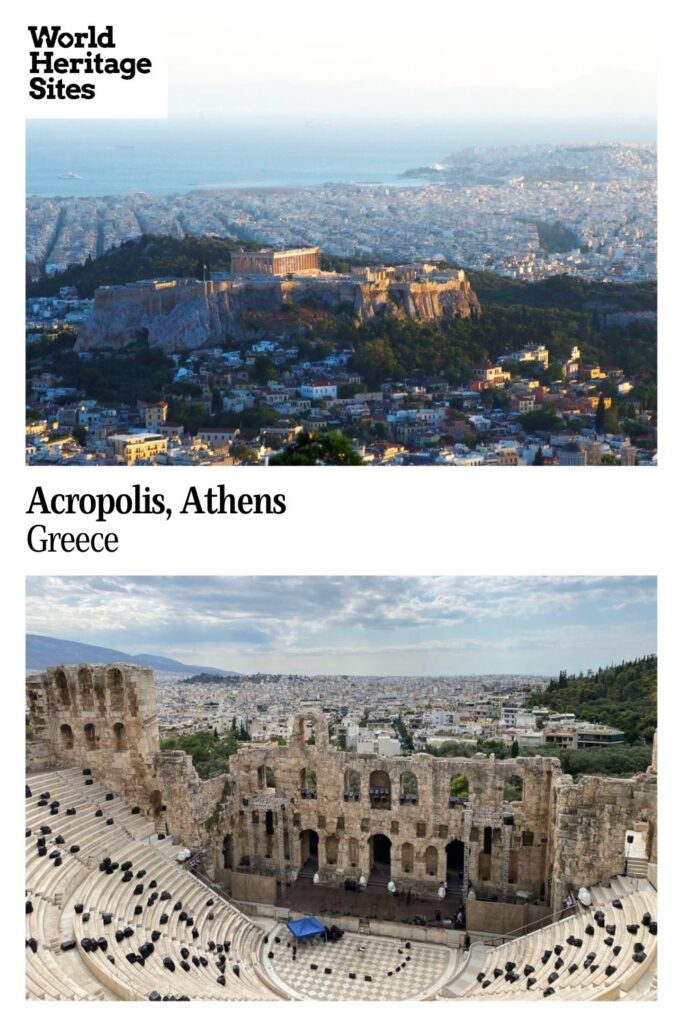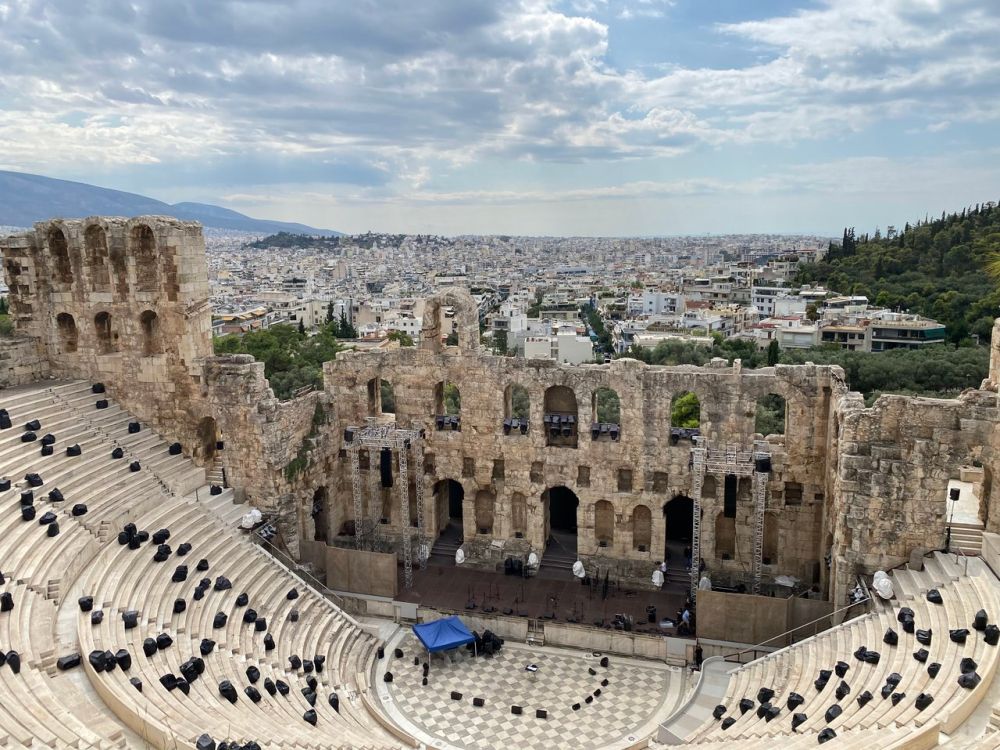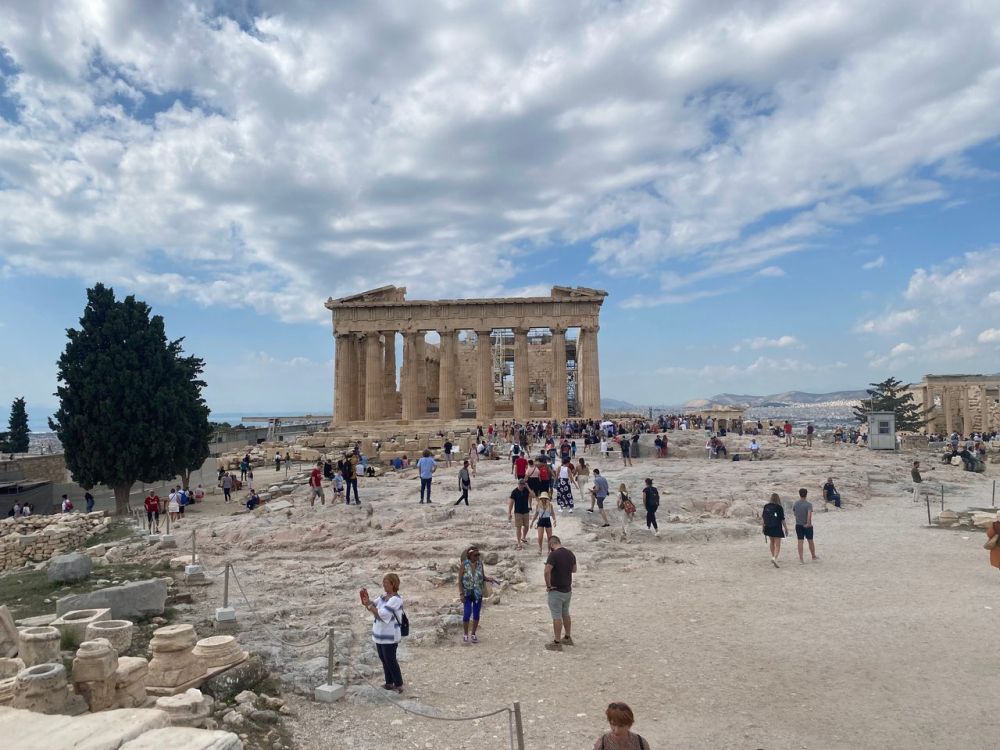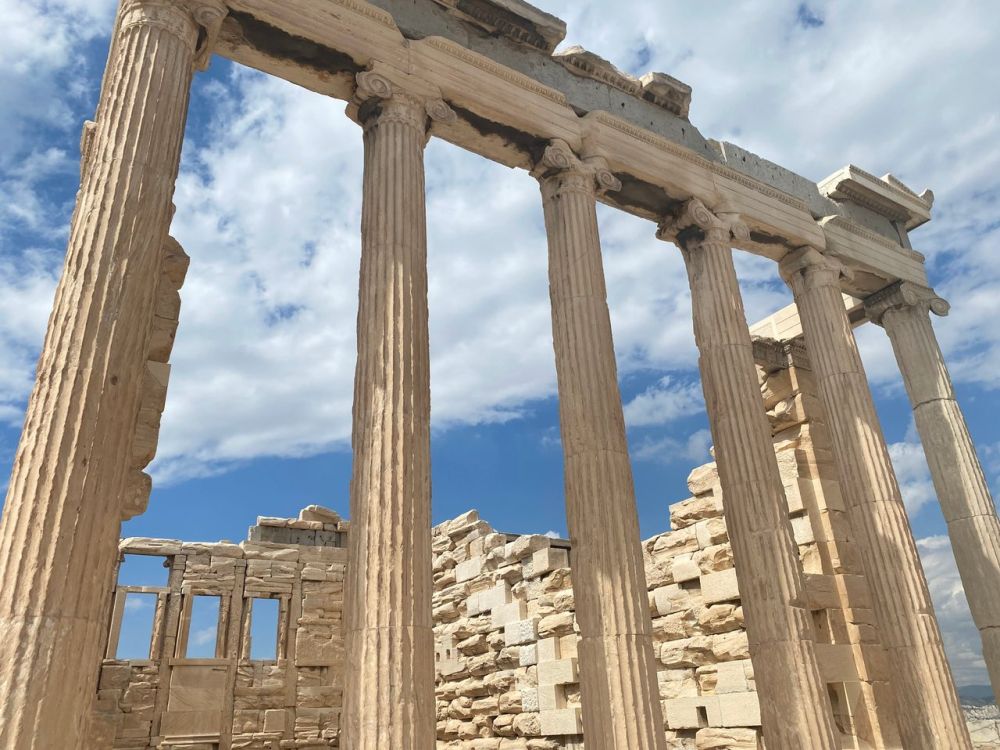Acropolis, Athens
By Ella Moore
What is the Acropolis in Athens?
Unlike what many people think, the Acropolis is not actually a single structure, but encompasses an entire ancient citadel, which sits on a rocky outcrop overlooking the Greek capital city, Athens. The Acropolis contains many valuable monuments and temples erected in the 5th century BC, the most famous of which is the Parthenon.
Disclosure: This article contains affiliate links. Making a purchase through an affiliate link will mean a small commission for this website. This will not affect your price.

Why is the Acropolis a UNESCO World Heritage site?
The Acropolis in Athens is a UNESCO World Heritage site because it is an important symbol of the development of ancient Greek civilization. The design of its structures has influenced architecture and art around the world. According to UNESCO’s website, “the Acropolis of Athens is the most striking and complete ancient Greek monumental complex still existing in our times.”
These structures are considered some of the finest examples of ancient Greek architecture and are a testament to the ingenuity and creativity of the Greek people. They’re also an important part of the cultural heritage of Greece, since these structures have overlooked the country’s capital city for thousands of years.

What can you expect on a visit to the Acropolis?
This is the most popular attraction in Athens, so expect crowds no matter what time of year you visit.
During your visit to the Acropolis you’ll be free to walk around the entire complex, marvelling at the different structures in the area. Highlights include:
- The Parthenon: A temple dedicated to Athena and the most well-known part of the Acropolis. Some of the original artworks from the temple, now known as the Elgin Marbles, are in the British Museum.
- The Theatre of Dionysus: Built into the side of the hill on which the Parthenon stands, this theater, at its largest, could seat 17 thousand people.
- The Propylaea: A gateway into the Acropolis complex, but it was never completed.
- The Temple of Athena Nike: Smaller than the Parthenon, and dedicated to Athena and Nike, this temple has Ionic columns.
- The Erechtheion: Another large temple dedicated to Athena, and, like the Temple of Athena Nike, it’s Ionic. It is different from the classical ancient Greek temple style in that it isn’t symmetrical.

You can only admire the majority of the attractions at the Acropolis from a distance. You can’t, for example, wander through the columns of the Parthenon. However, the rule that everybody must keep their distance from the monuments means that it’s easier to get photos of the monuments without other people in the way.
As well as the wonderful structures, the Acropolis’ position atop a rocky hill means that you’ll get stunning views over the city of Athens from the site.
There’s very little in terms of historical information about the structures at the Acropolis unless you pay extra to enter the Acropolis Museum. For this reason, it’s worth either booking a guided tour of the Acropolis, downloading an audio tour, or bringing a guidebook with you.
Is the Acropolis worth visiting?
The Acropolis is absolutely worth visiting, even if you’re not particularly interested in ancient history. The sheer size and intricacy of these monuments is mind-blowing, and will be unlike anything you have ever seen before. It’s the main reason to pay a visit to Athens on your trip to Greece.
You could spend up to half a day exploring the Acropolis, but most people will find that 90 minutes to two hours is enough time to see the highlights. It’ll take more time if you visit the museum and/or spend time exploring the charming streets of the Plaka neighborhood – the area you pass through on the way up the hill.
What sorts of travelers would like the Acropolis?
Almost all travelers will enjoy visiting the Acropolis! Although the most obvious target audience would be history buffs, you don’t even need to be particularly interested in history to enjoy a visit to the Acropolis. It’s just that impressive!

Tips for visiting the Acropolis
The cost of admission to the Acropolis varies dramatically – it costs double to visit in summer compared to winter! For this reason, if you’re visiting Athens on a budget, winter is the best time to go.
For entry to the Acropolis complex, you can get the Athens Combined Ticket, which is cheaper than separate tickets and allows skip-the-line entry to the Acropolis and six other ancient sites in Athens. The Combined Ticket is worth it as you can read in this review, if you’re visiting Athens in a hurry and want to see the city’s top archaeological sites. Being able to skip the line at the Acropolis could save you hours!
Wear sturdy, comfortable shoes. A visit to the Acropolis involves a lot of walking on uneven and unpaved surfaces, and a steep climb uphill to the top.
Pack plenty of water, suncream and a hat if you’re visiting the Acropolis in summer. Athens in summer can reach temperatures of up to 40°C, and there isn’t much shade at the Acropolis site.
My top tip for visiting the Acropolis without the crowds is to arrive as soon as it opens, at 8am. It’s an early start, but you’ll get to enjoy around 2 hours at the site before the crowds descend and the weather heats up.
If you’re going to be traveling around Greece, check out the other World Heritage sites the country offers.

Where is the Acropolis?
The Acropolis is located in Athens at the address Athens 105 58. It would be very difficult to visit the Acropolis with a car as parking is very limited.
Instead, the best way to get to the Acropolis is by walking from your accommodation in Athens, or by taking the subway. The closest stations are Acropoli, on the Red Line, and Monastiraki, on the Blue Line.
For more information about the Acropolis, its opening hours and admission fees, see its official website.
Have you been to the Acropolis in Athens? If so, do you have any additional information or advice about this UNESCO World Heritage site? Please add your comments below!
